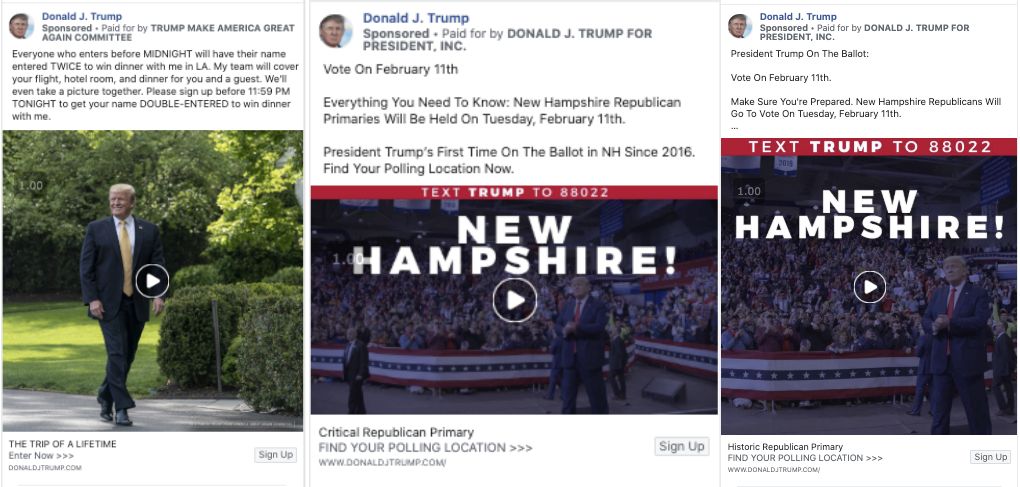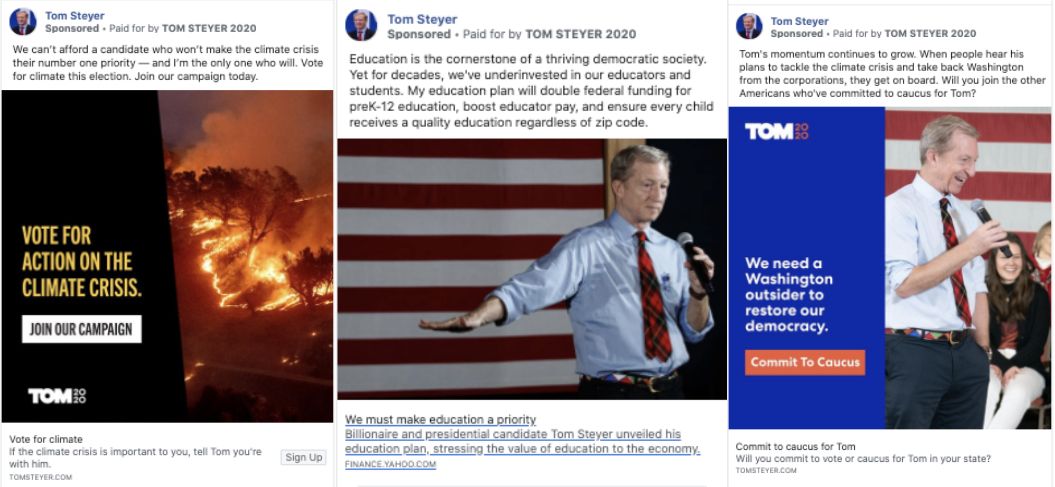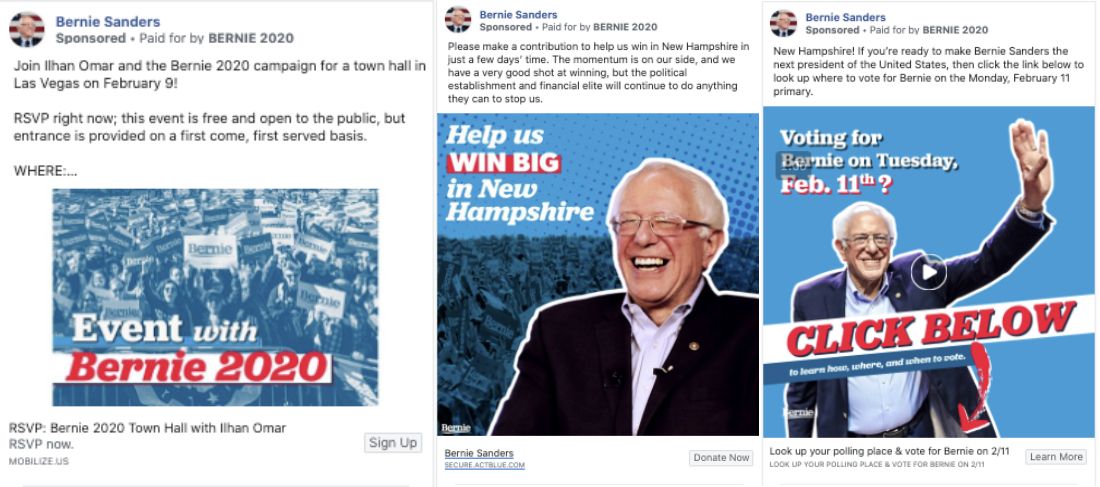By: Tom Murray | Managing Director
In lieu of all of the issues with Facebook and the elections in the past, Facebook opened up their ads to a transparent ad library for all political advertisers. This under the hood look allows anyone to see what ads any of the candidates are running, and even how much they are spending on those ads.
Just in 2020 alone, you can see that 3 candidates have spent over $20 Million in ads alone, and about $110M between the top candidates in total.

It also shows the number of ads per advertiser, which shows that these candidates are running their Presidential campaigns like a true direct response campaign - with tens of thousands of ad variations over the past 30 days.

Let’s take a look at the top four candidates and learn something from each of their ads.
Mike Bloomberg

Key Takeaways & Learnings:
- Something we’ve seen for years is that anytime you put hands into an ad, they almost always have higher click-through-rates (CTR) and a lot of Bloomberg's static image ads include the use of hands.
- Text overlay is being used to stand out and give a memorable line that is easy to recall.
- They are A/B testing different text screens on the phone, where we see that even the slightest of changes can cause drastic increase in performance.
Donald Trump

Key Takeaways & Learnings:
- They are A/B testing different video sizes (1.91:1 and 1:1 and more), even though certain sizes like 1:1 are best practices. These older and less used sizes stand out a bit more now since everyone has moved to 1:1 primarily for video and images.
- They use text bars to showcase important information, as well as showing multiple methods of entry. Users can sign up by clicking or by simply texting. Text messaging has 95% open rates, so once he captures the phone number, a steady stream of follow up messages can follow with extremely high open rates.
- Going after a user’s FOMO (fear of missing out) by saying things like “Trip of a Lifetime” or “Historic Republican Primary” or using clear dates and times in order to make sure users act NOW!
Tom Steyer

Key Takeaways & Learnings:
- Most candidates will want to put their face on all of their ads, but Tom Steyer’s #1 cause is around climate, and the ads with the wildfires is a strong, eye catching image in a news feed. In a sea of people, this kind of image stops the scroll so people can see his main message.
- Using 3rd party publishers that have credibility (i.e. Yahoo Finance) can increase the user’s perception of the content, seeing it as more relevant and authentic.
- Not all ads are going to drive a major conversion on step 1. In the ad where he asks users to just “Commit to Caucus,” he isn’t asking anyone to get up, and go to the polls. He is just securing a micro-commitment, and then over time gaining more micro-commitments can lead to a macro-commitment (like voting for him). This is similar to when advertisers just ask for an email address, and eventually get them to buy something over time as they lead them down their own consumer journey.
Bernie Sanders

Key Takeaways & Learnings:
- Using event ads helps gain a micro-commitment and also to spread the word. Events trigger a lot of notifications in Facebook for free (i.e. reminder that the event is upcoming, event is today), and even can notify friends where it says “X person is attending events nearby” so this one sign up can trigger many different notifications over time without needing to retarget a user.
- Using white borders around the person in the image, which may seem like a tiny image effect, can make all the difference. It stands out in the feed which helps stop a user's scroll. The ad copy above is also very direct - “please make a contribution” right away since most people don’t read all the copy, and you only have a short amount of time to capture a user, so leading with the main message first and foremost is important.
- Custom thumbnails that also share information are two ads for the price of one. The thumbnail that appears has all the relevant info - date, as well as the CTA on where to click. Making things as easy as possible for users is important (especially for older voters) so the arrow and click below messaging help guide a user do exactly the action you want them to take.
